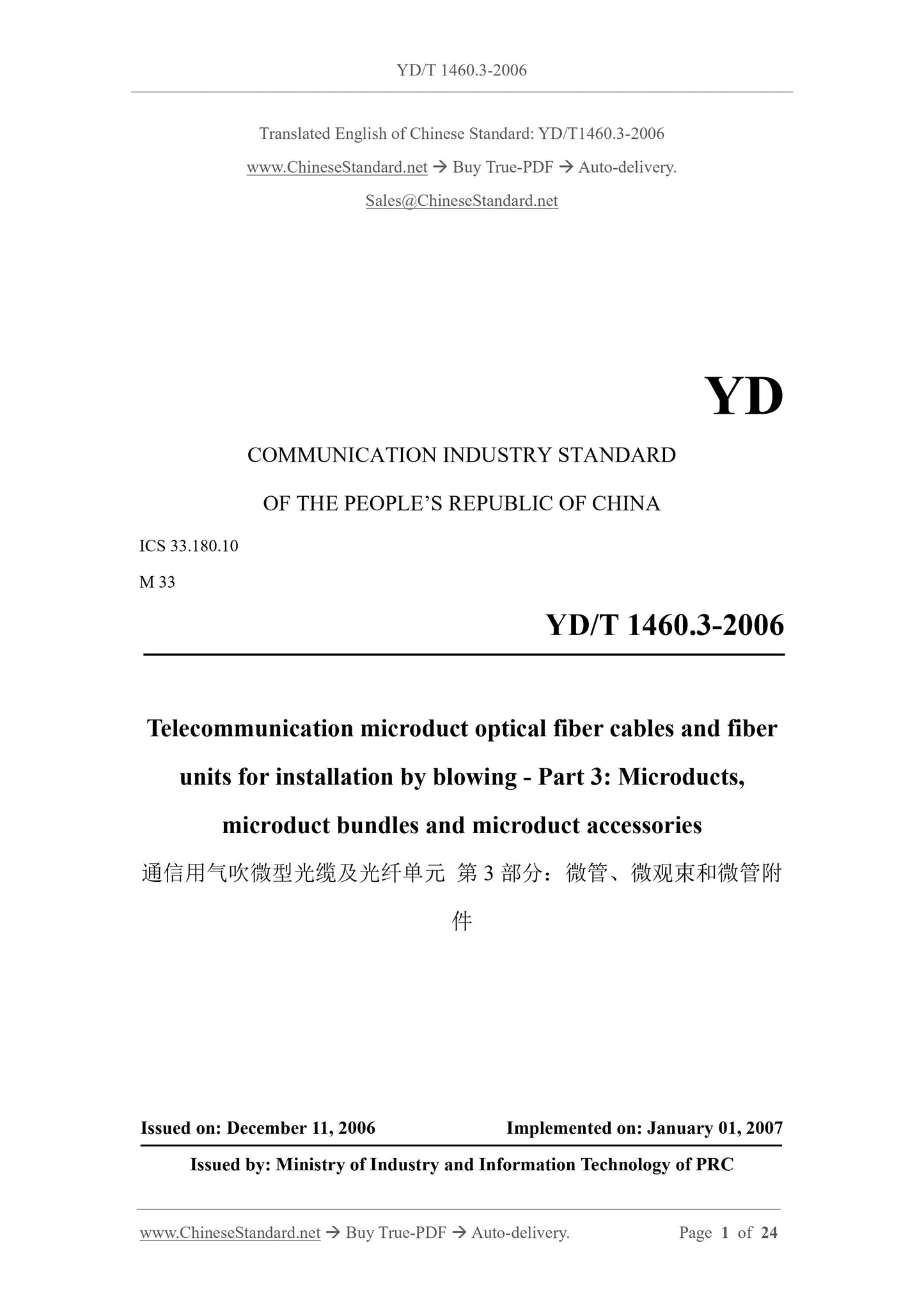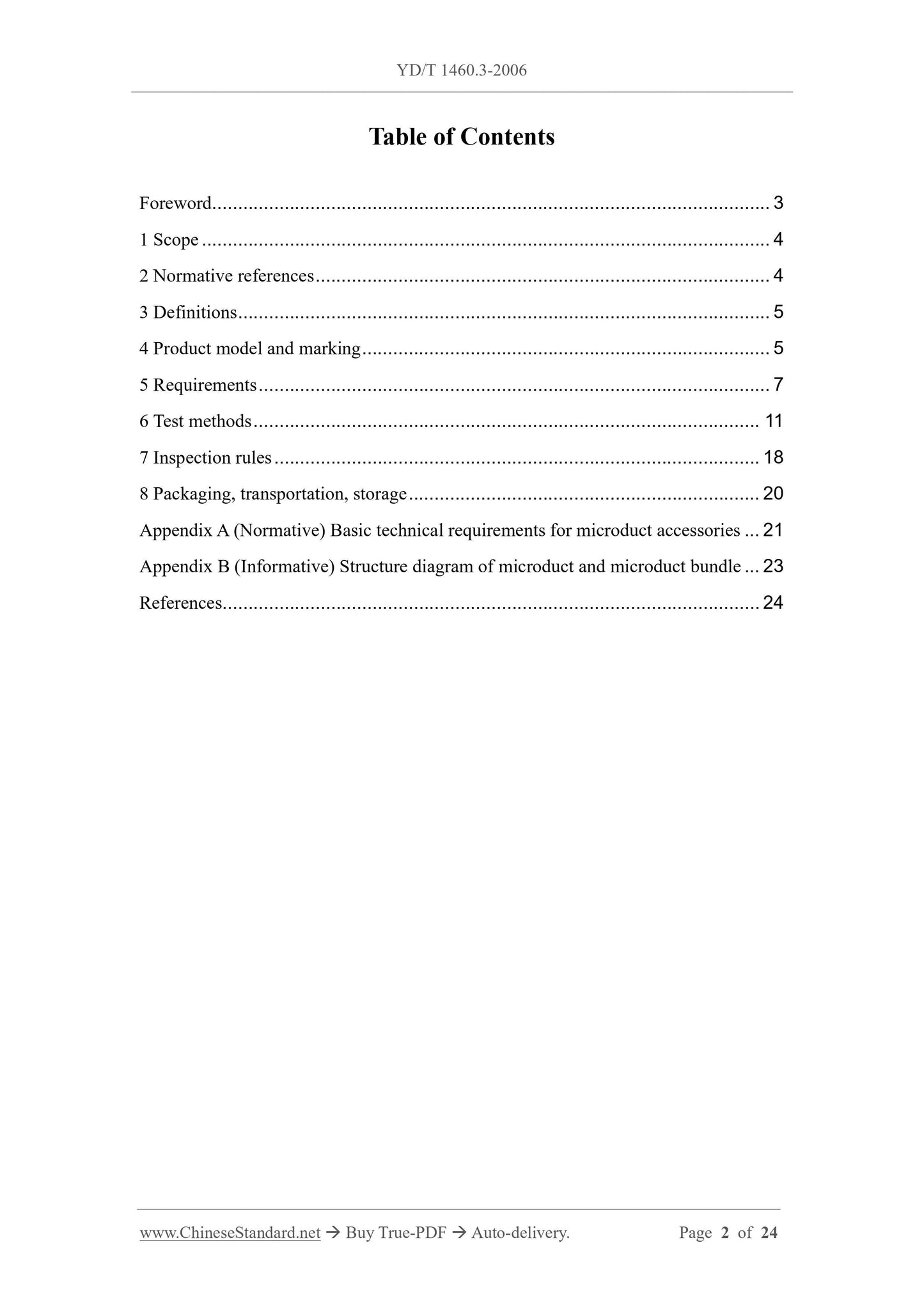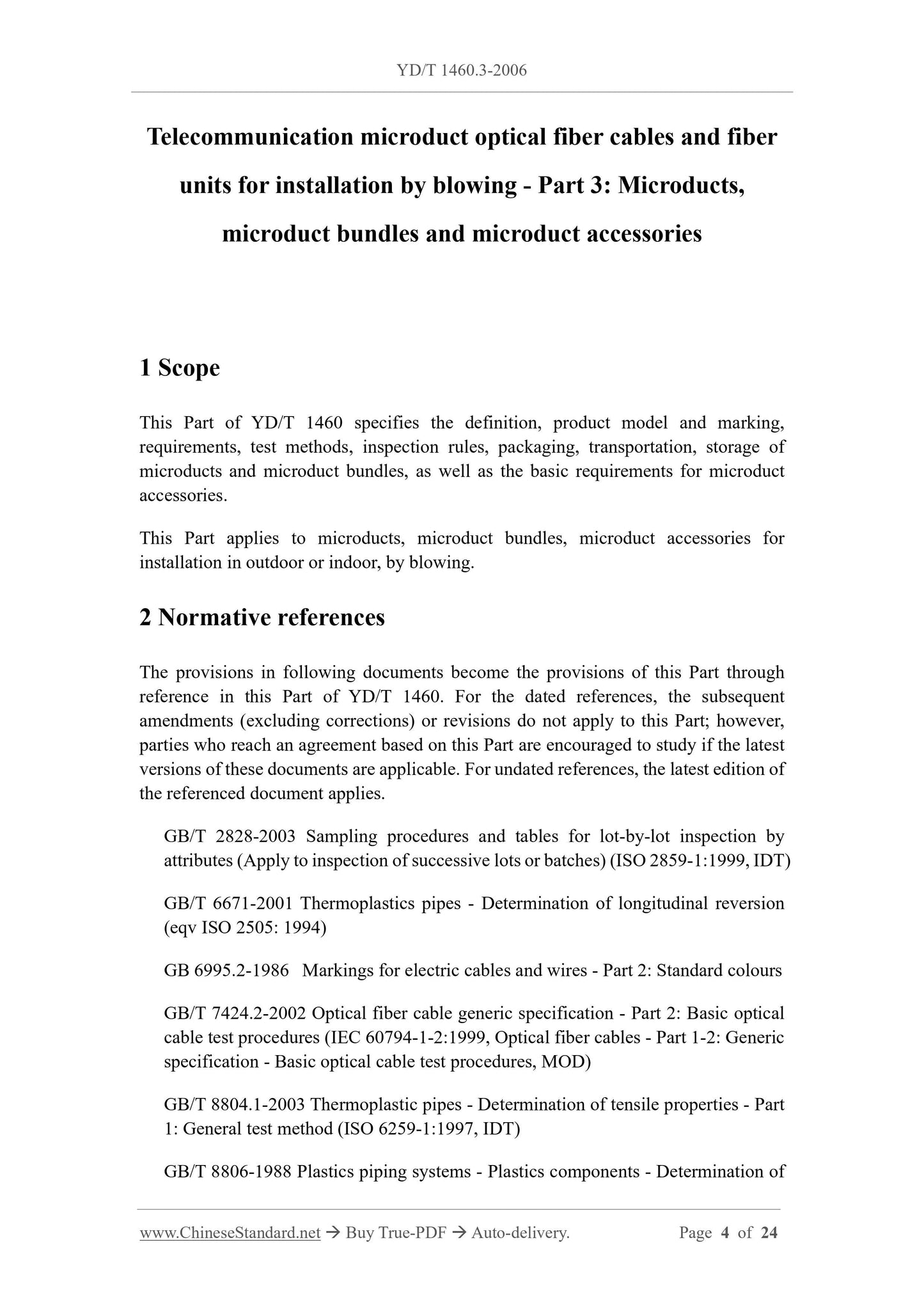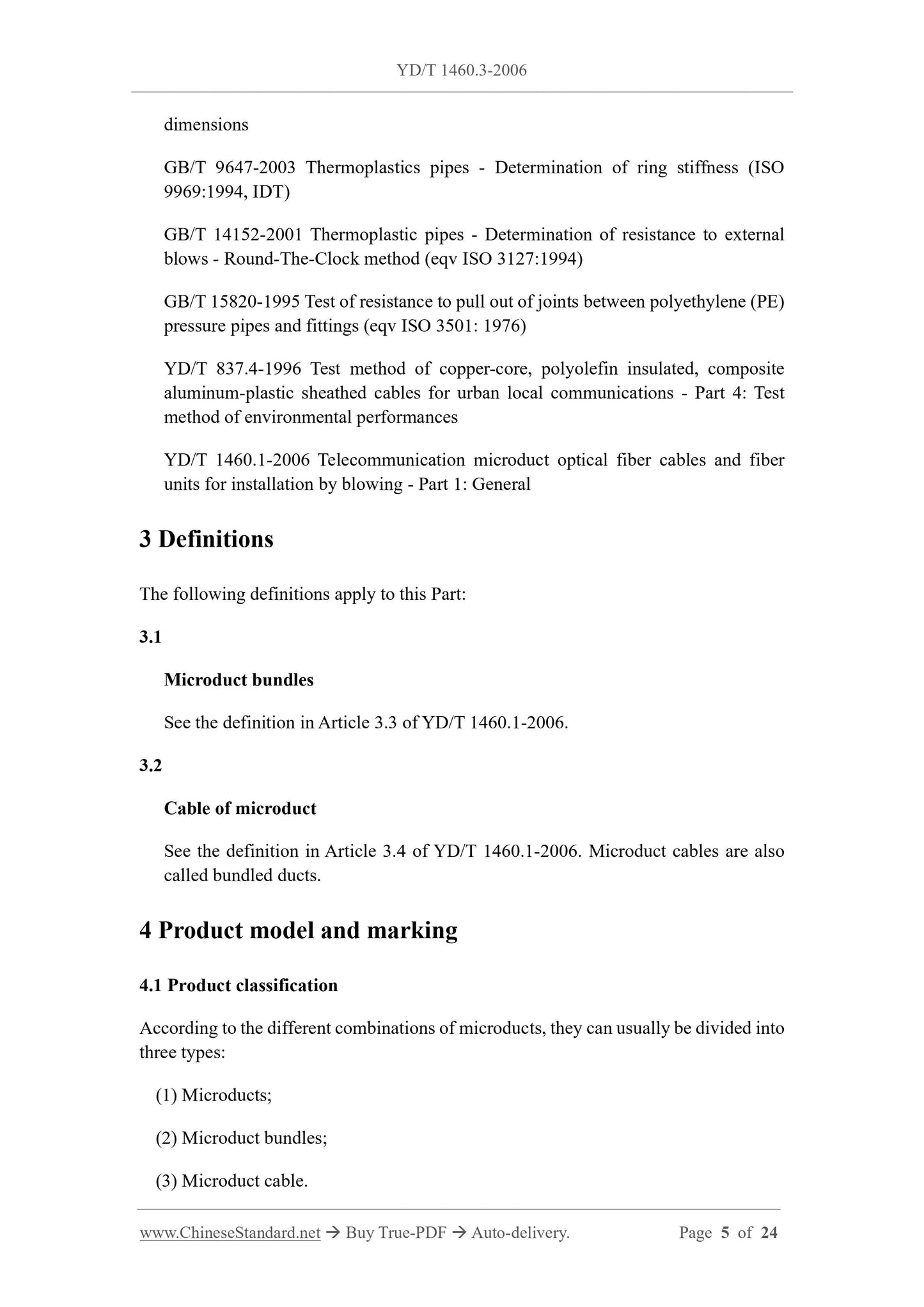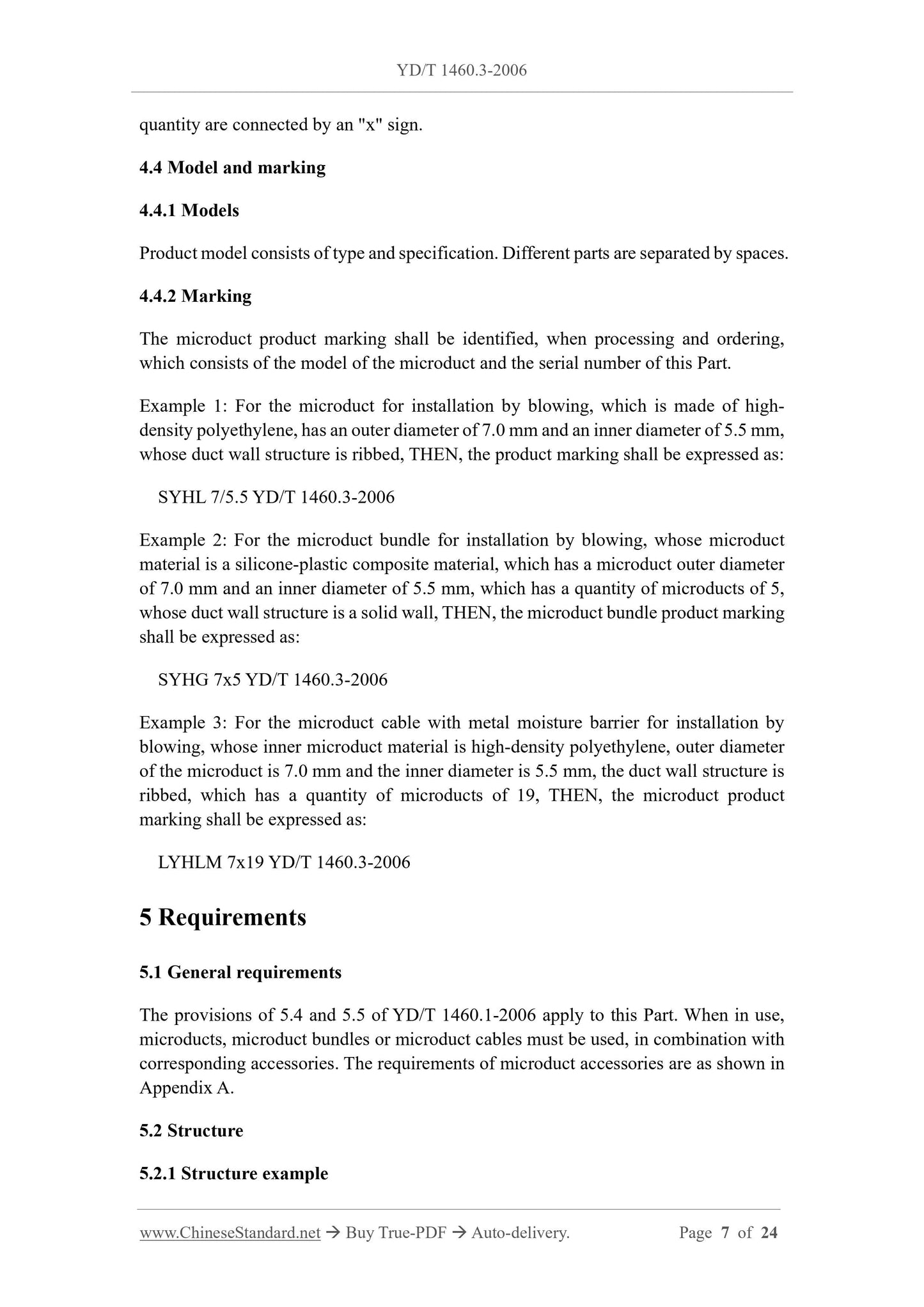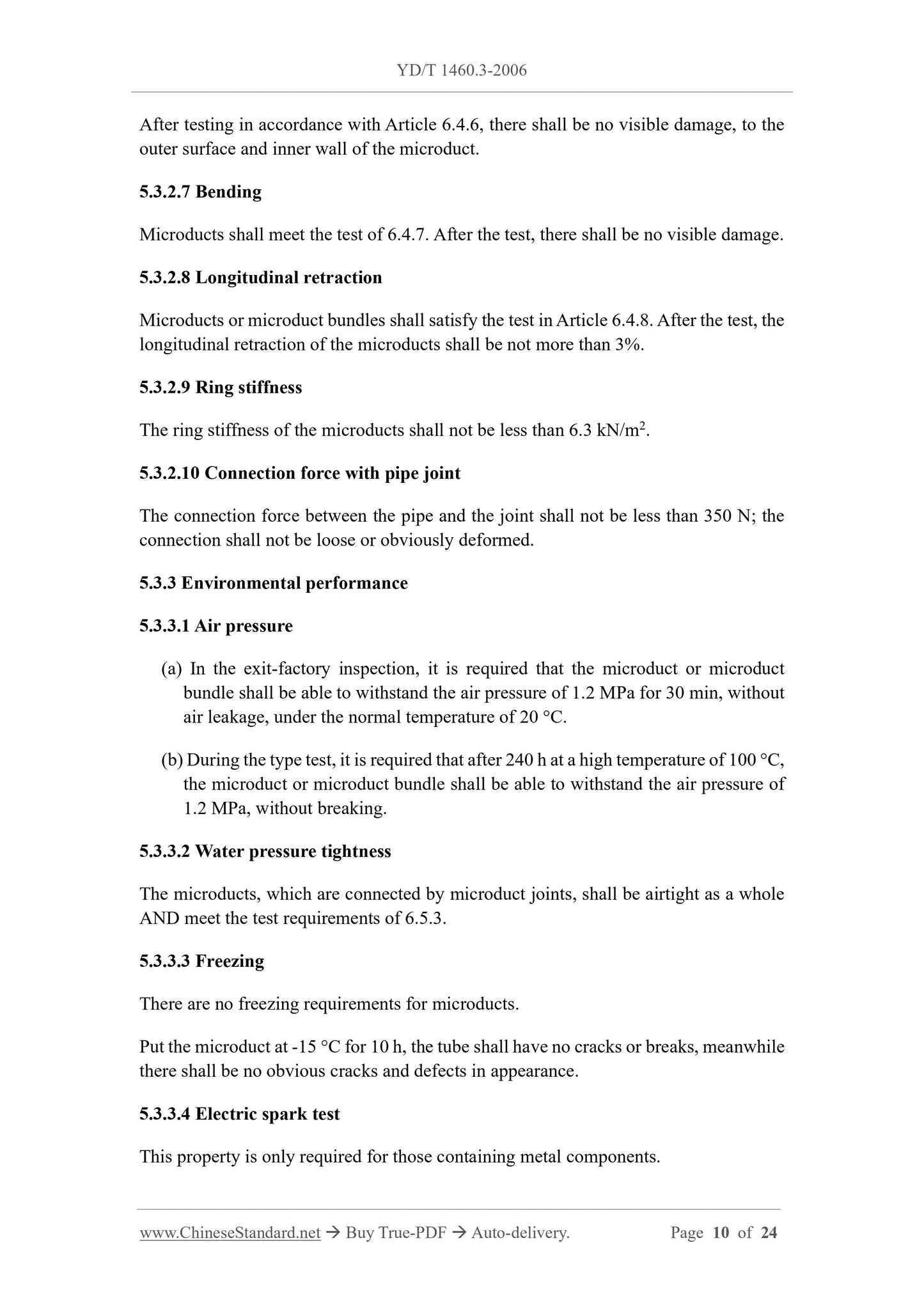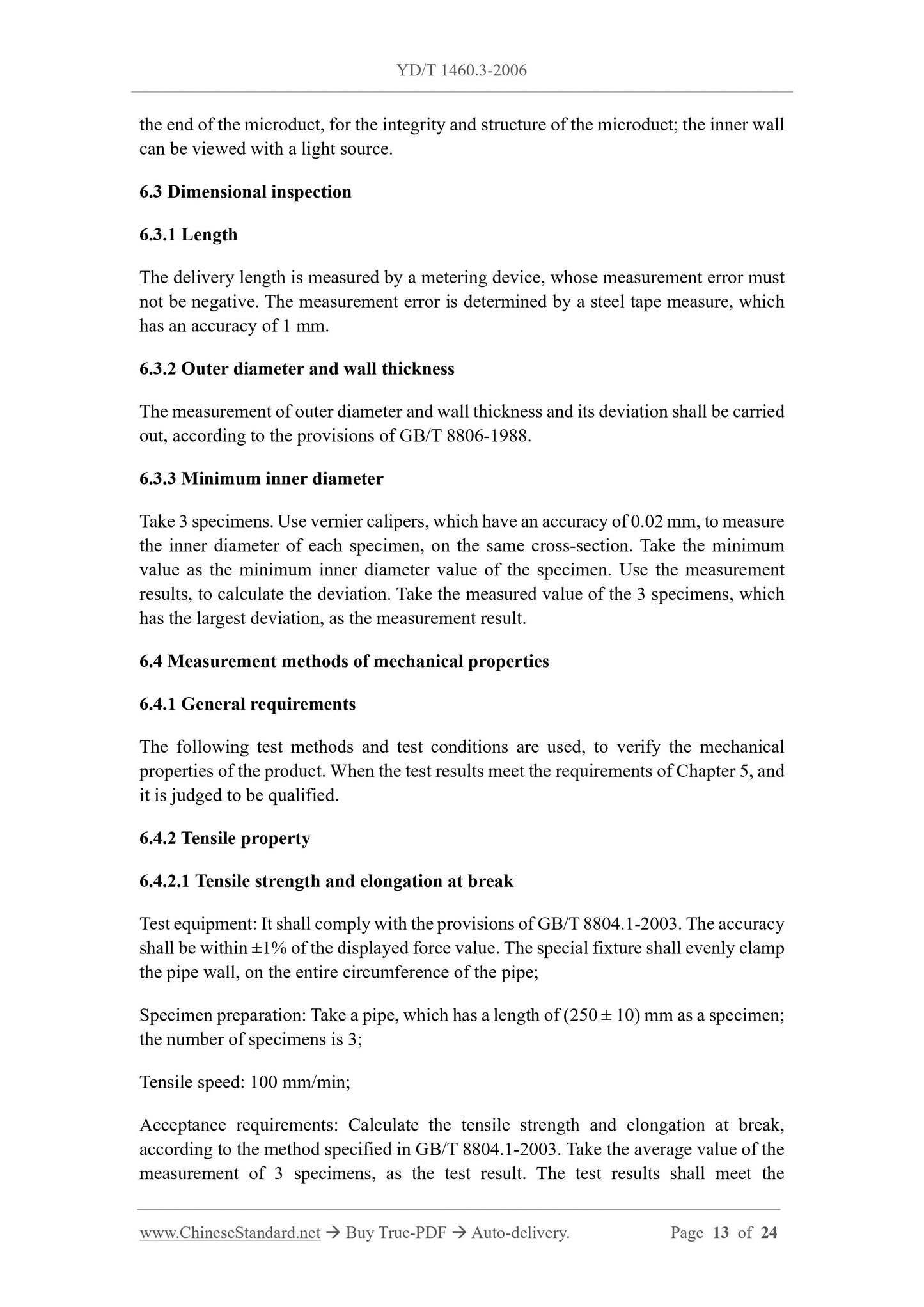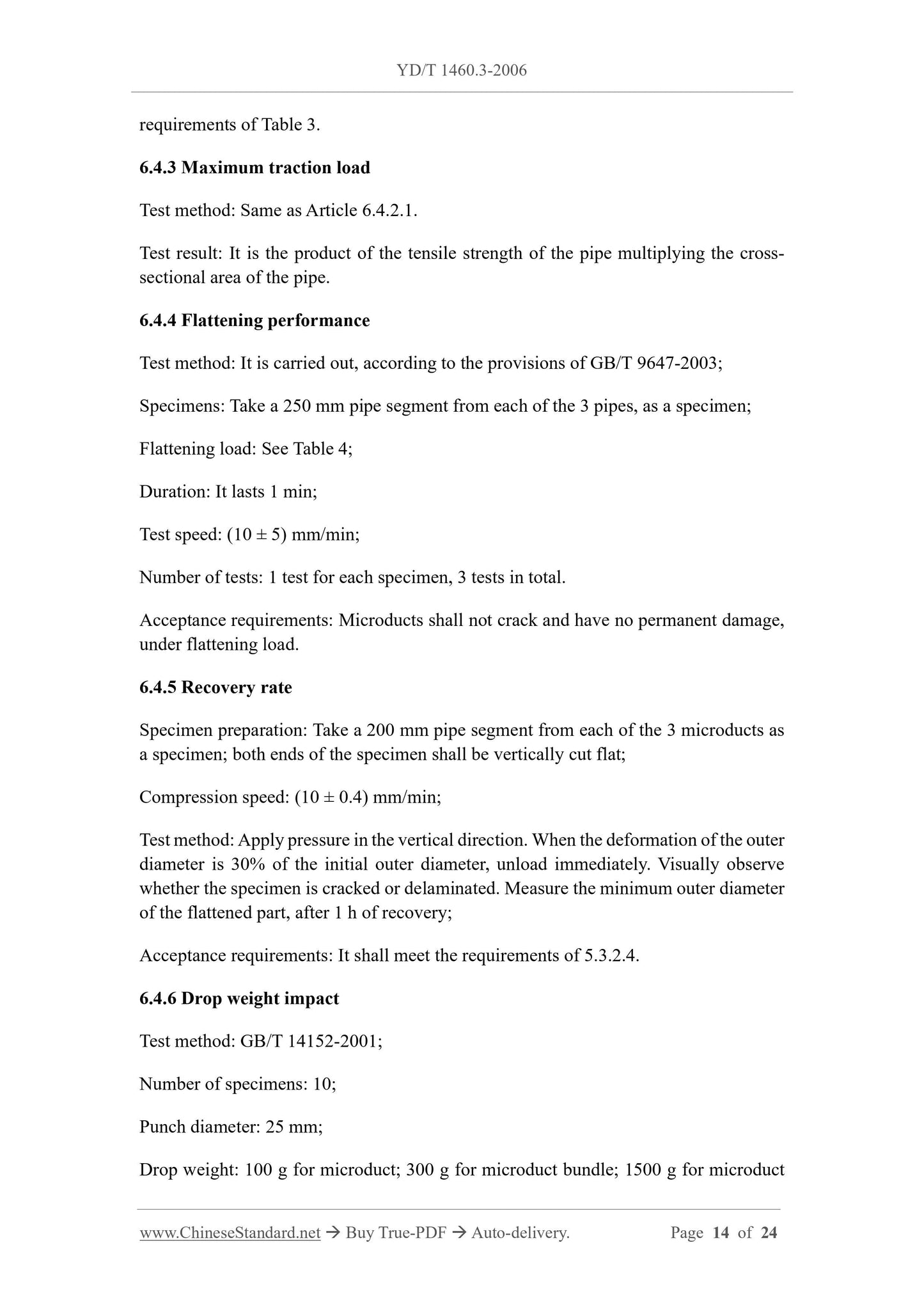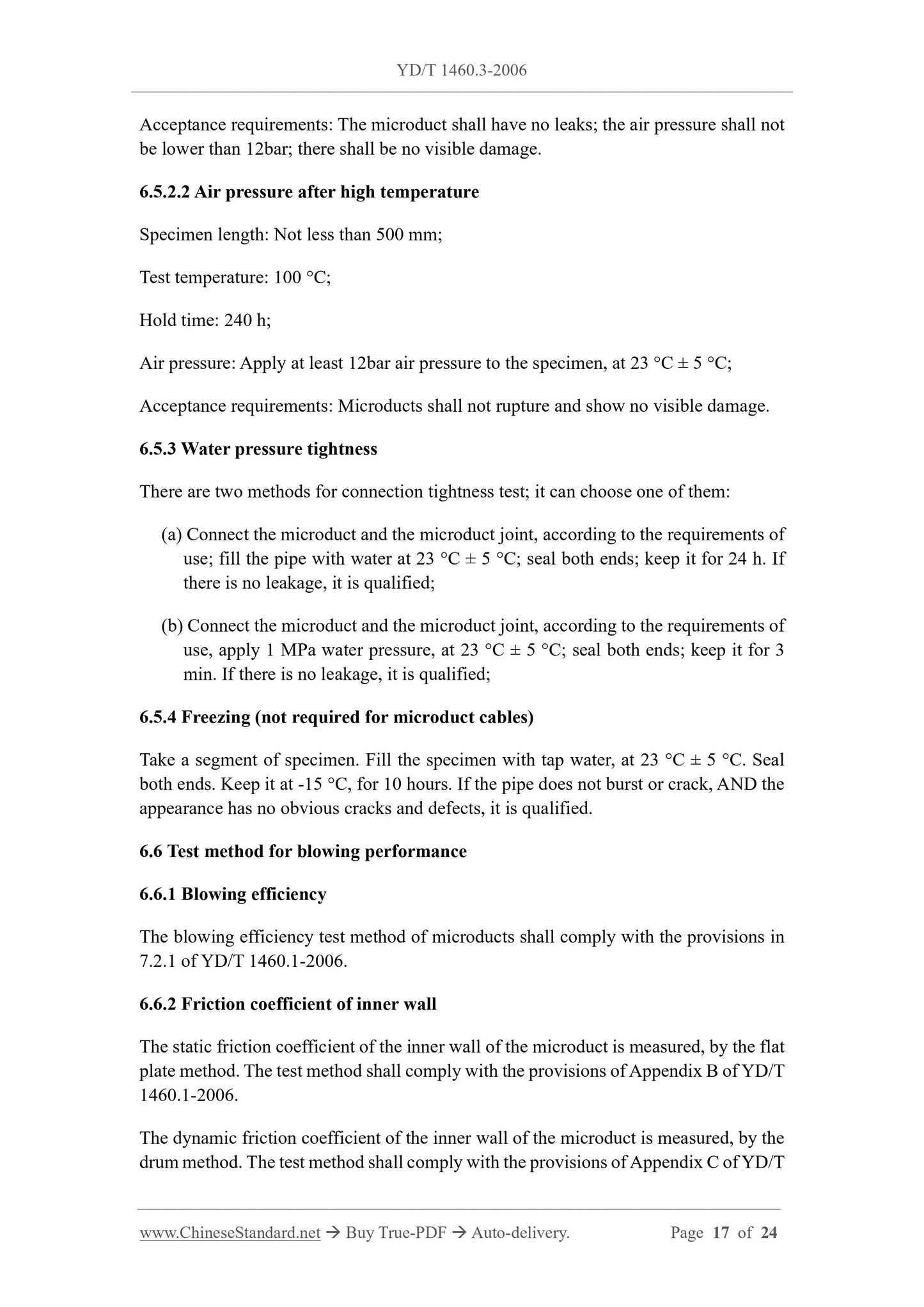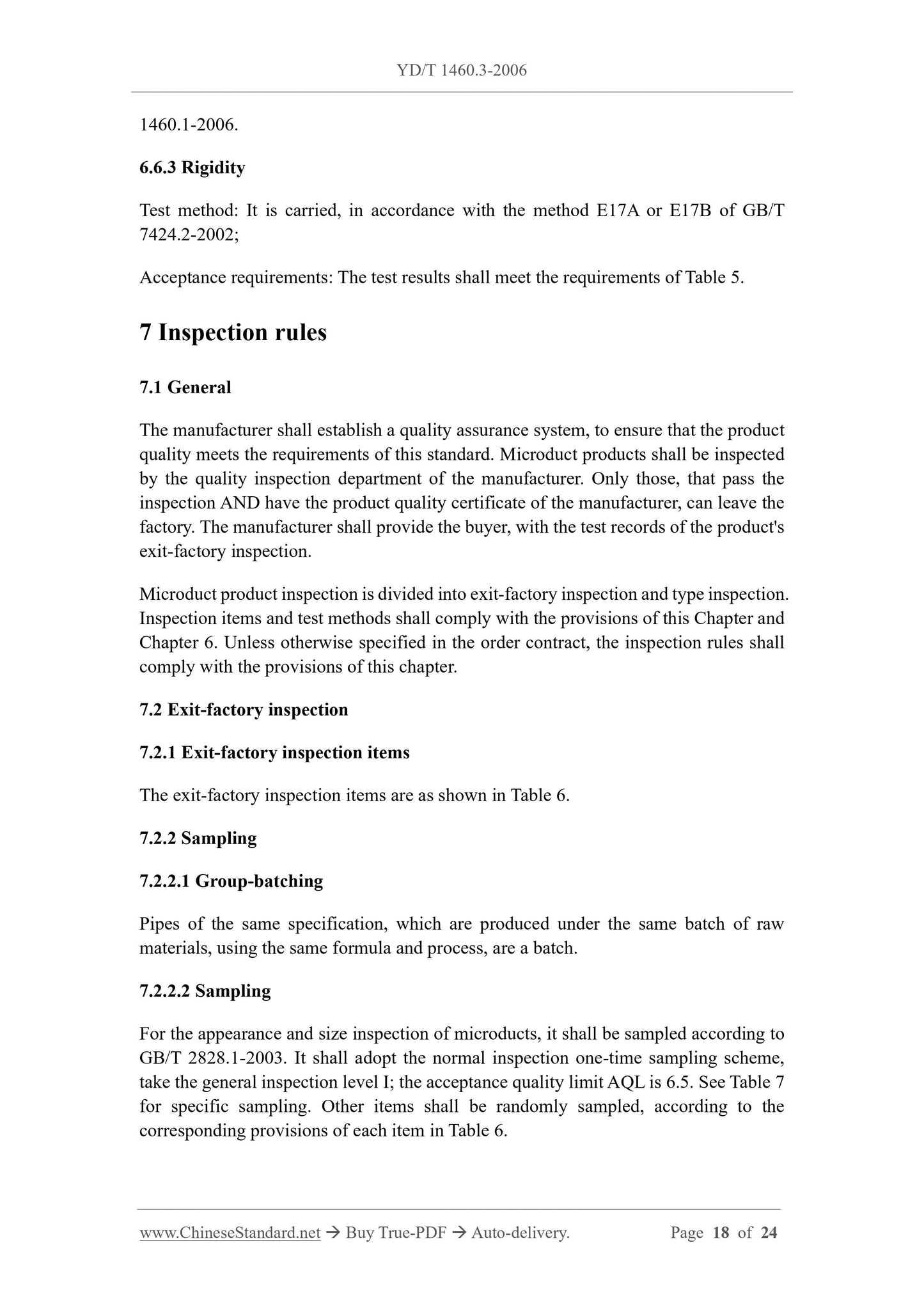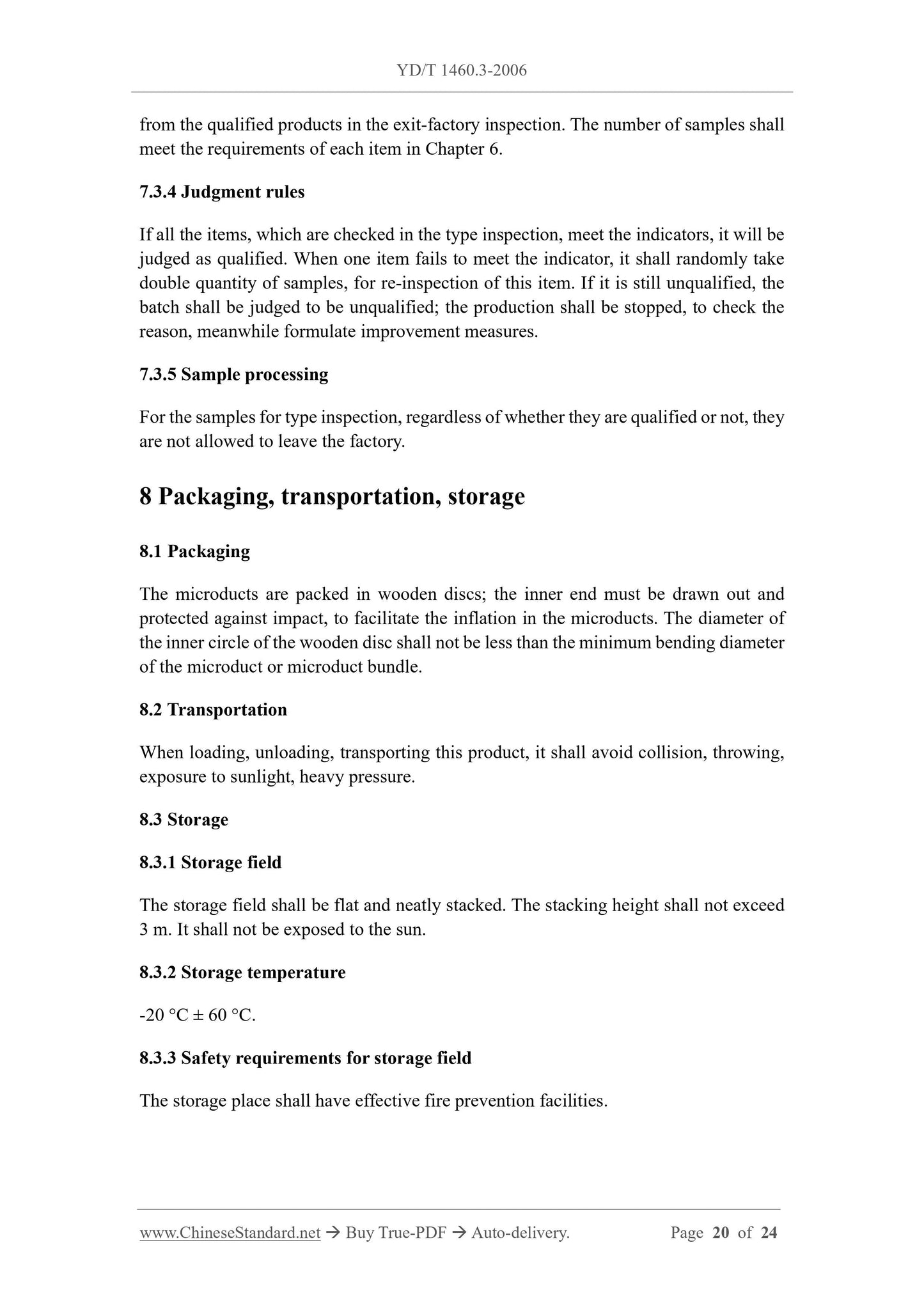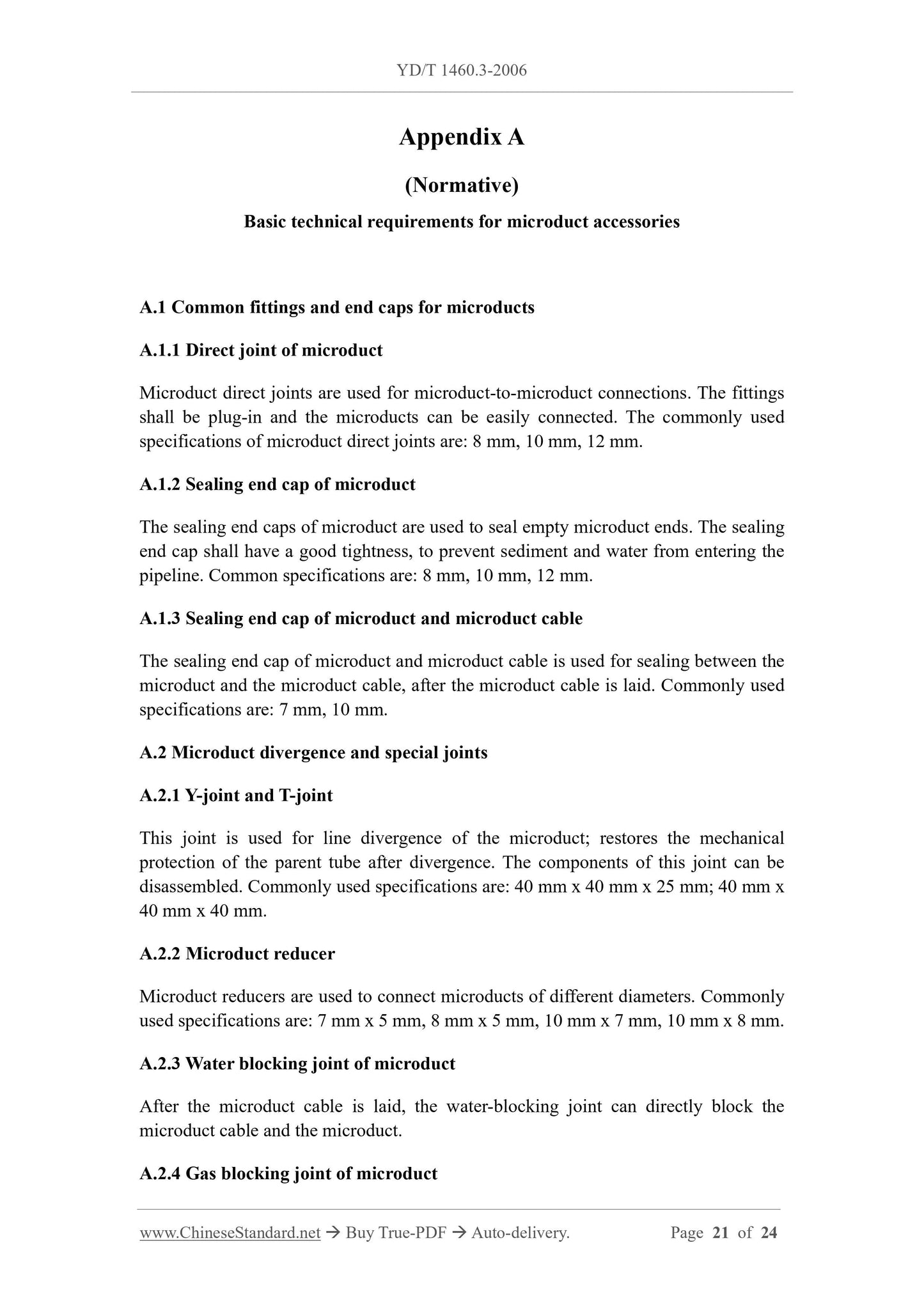1
/
of
12
www.ChineseStandard.us -- Field Test Asia Pte. Ltd.
YD/T 1460.3-2006 English PDF (YD/T1460.3-2006)
YD/T 1460.3-2006 English PDF (YD/T1460.3-2006)
Regular price
$250.00
Regular price
Sale price
$250.00
Unit price
/
per
Shipping calculated at checkout.
Couldn't load pickup availability
YD/T 1460.3-2006: Telecommunication microduct optical fibre cables and fibre units for installation by blowing - Part 3: Microducts, microduct bundles and microduct accessories
Delivery: 9 seconds. Download (and Email) true-PDF + Invoice.Get Quotation: Click YD/T 1460.3-2006 (Self-service in 1-minute)
Newer / historical versions: YD/T 1460.3-2006
Preview True-PDF
Scope
This Part of YD/T 1460 specifies the definition, product model and marking,requirements, test methods, inspection rules, packaging, transportation, storage of
microducts and microduct bundles, as well as the basic requirements for microduct
accessories.
This Part applies to microducts, microduct bundles, microduct accessories for
installation in outdoor or indoor, by blowing.
Basic Data
| Standard ID | YD/T 1460.3-2006 (YD/T1460.3-2006) |
| Description (Translated English) | Telecommunication microduct optical fibre cables and fibre units for installation by blowing - Part 3: Microducts, microduct bundles and microduct accessories |
| Sector / Industry | Telecommunication Industry Standard (Recommended) |
| Classification of Chinese Standard | M33 |
| Classification of International Standard | 33.180.10 |
| Word Count Estimation | 18,147 |
| Date of Issue | 2006-12-11 |
| Date of Implementation | 2007-01-01 |
| Regulation (derived from) | MIIT Science [2006] No. 730 |
| Issuing agency(ies) | Ministry of Information Industry of the People's Republic of China |
| Summary | This standard specifies the microtubules and microtubule bundle definitions, product type and marking, requirements, test methods, inspection rules, packaging, transport and storage, and the basic requirements of microtubule attachments. This standard applies to outdoor or indoor blower mounting system microtubules, microtubules and microtubule attachments. |
Share
